Ribeye steak is one of my top choices for a date night in. You only need a few simple ingredients and a skillet to enjoy a steak that is pan-seared to perfection.
There is no cause for complex seasoning because ribeye steak is one of those cuts that can really hold its own. All you need is salt and pepper then the marbling will do the rest. After just a few minutes of pan-searing, its delicious juices will tenderise the meat and provide all the flavour you desire. Just rest the steak for 10 minutes and enjoy biting into the perfectly charred crust to taste the succulent and juicy centre. Serve with your sides of choice or even enjoy it alone. A glass of full-bodied red wine is highly recommended.
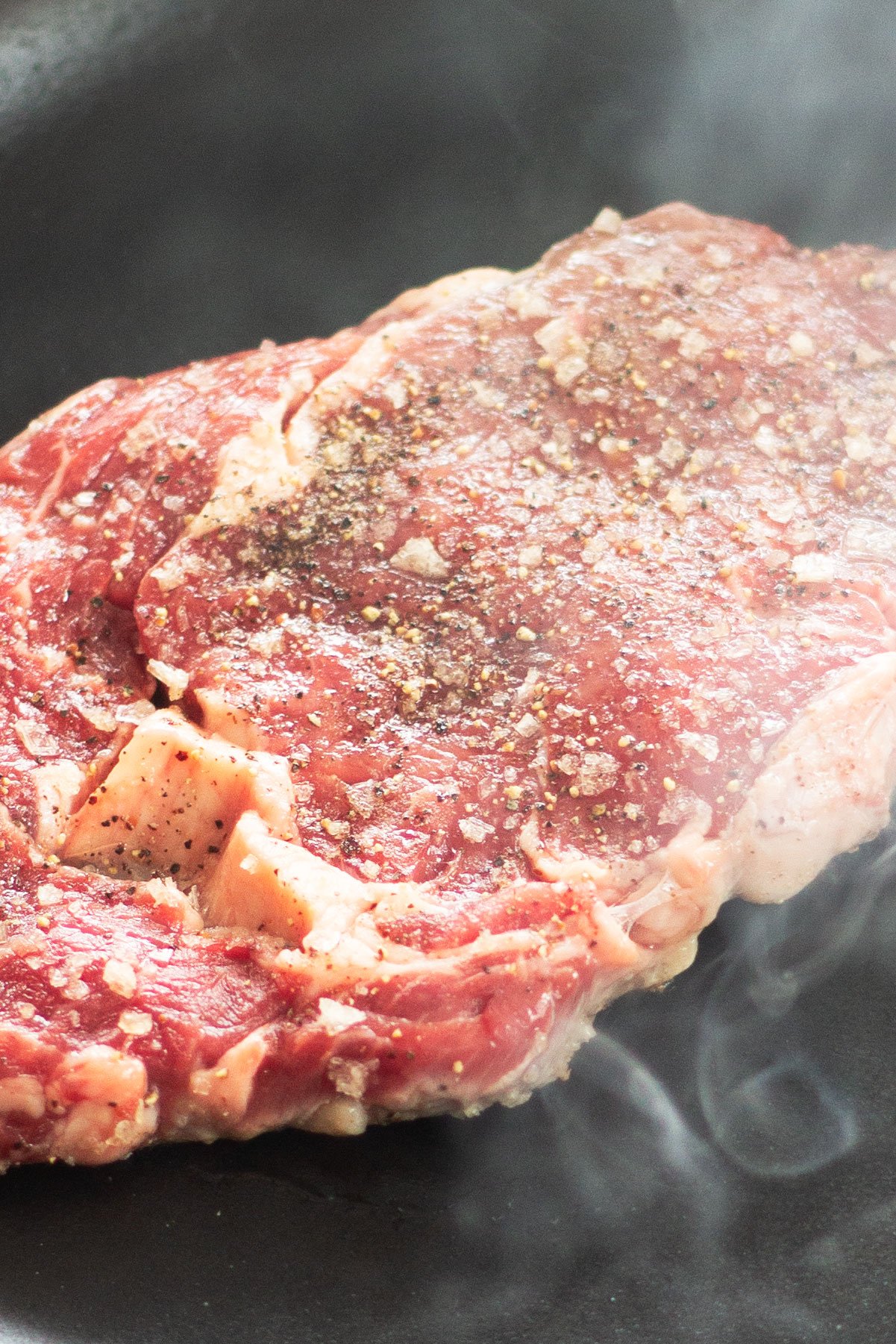
How do you like you steak? Check out my guide on how to achieve your ideal level of doneness whether it's rare, medium or well-done.
Or, if you're in the mood for a burger, check out my Cast Iron Skillet Burger recipe.
Key ingredients:
Ribeye steak:
- How much? allow 200-250g per person, although there are lots of people who will happily eat a larger steak.
- Where to buy? I highly recommend buying the best steak you can afford from a local butcher if possible. If you are in the UK and wish to order your steak online Farmison, Ginger Pig and Swaledale Butchers are solid choices.
- Choosing a good steak: if you are able to select the steak yourself make sure you select the one with the best marbling. Look at the number of white stringy flecks in the steak. This fat makes the steak juicy and flavourful. The more visible fat you can see, the yummier and more juicy the steak will be. Make sure the steak is at least 1 inch thick. This is especially important if you prefer a rarer steak.
- Ideal doneness: this is a matter of personal preference. I always cook mine to medium-rare. Ribeye is not a suitable cut of steak to eat rare because the fat needs more cooking time to flavour the meat. Leaner cuts like fillet and rump are better choices if you are after a rare steak.
Fat:
- Oil: choose an oil that cooks well at a high temperature like groundnut or vegetable oil. Avoid using olive oil because it burns when cooked at a high temperature.
- Butter: is added to the pan for 1 to 2 minutes are the end of the cooking process. It adds richness to the steak and intensifies the crust.
Seasoning:
- Smoked salt and freshly ground black pepper - for seasoning the steak before you cook it. I recommend using smoked salt if you can because it heightens the smokey grilled flavours of the steak. If you don't have smoked salt you can use sea or kosher salt.
- Thyme: is added with the butter at the end of the cooking process to add additional flavour to the steak.
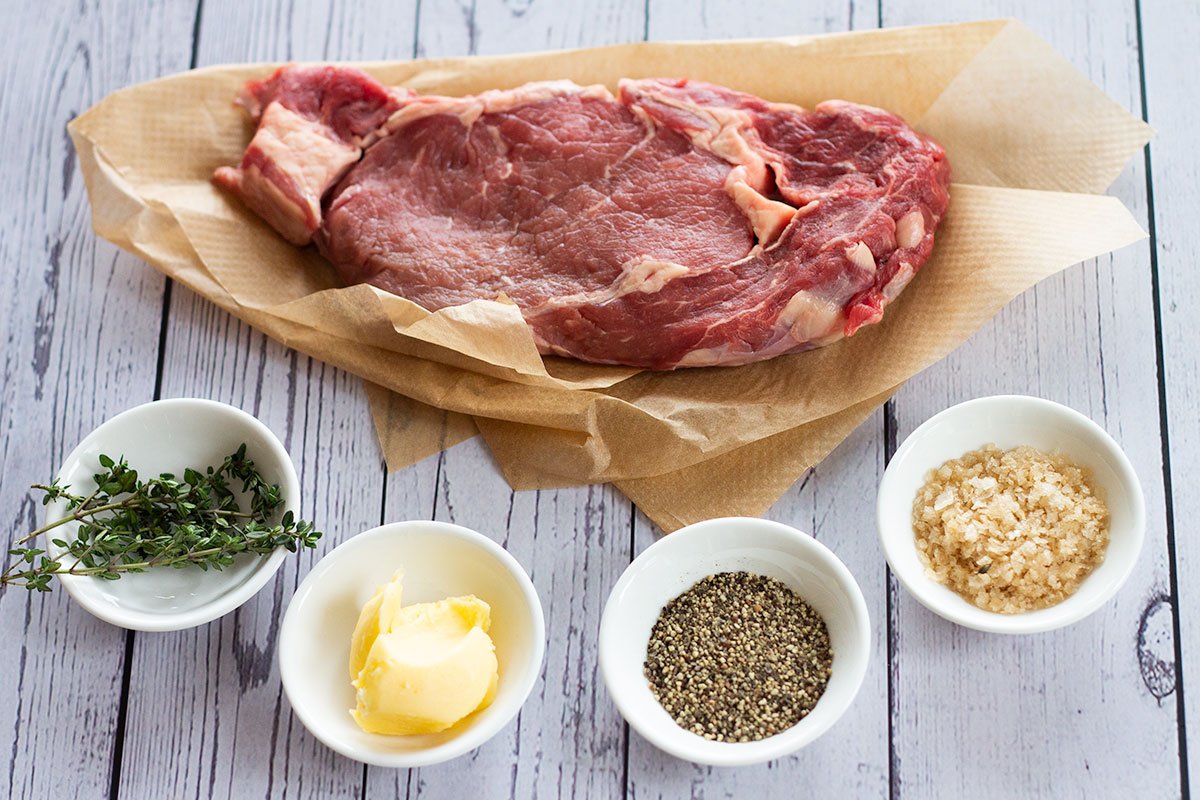
How to cook the perfect ribeye steak - step-by-step:
1. Allow the steak to come to room temperature
Remove the steak from the fridge between 1 and 1.5 hours before you cook it to ensure it cooks evenly. Remove any moisture with kitchen paper at this point to guarantee a steak that is brown and crusted on the outside and juicy on the inside.
2. Get the pan super hot and season the steak
Put your skillet on its highest heat. Trust me on this one. You want the pan to be red-hot before you start cooking the steak. Heating up the pan at this stage ensures it will be hot enough once the steak has been seasoned.
Rub a little oil into both sides of each steak and season generously with salt and pepper. Don't worry about over-seasoning and ensure the steaks have a good covering of salt and pepper on each side.
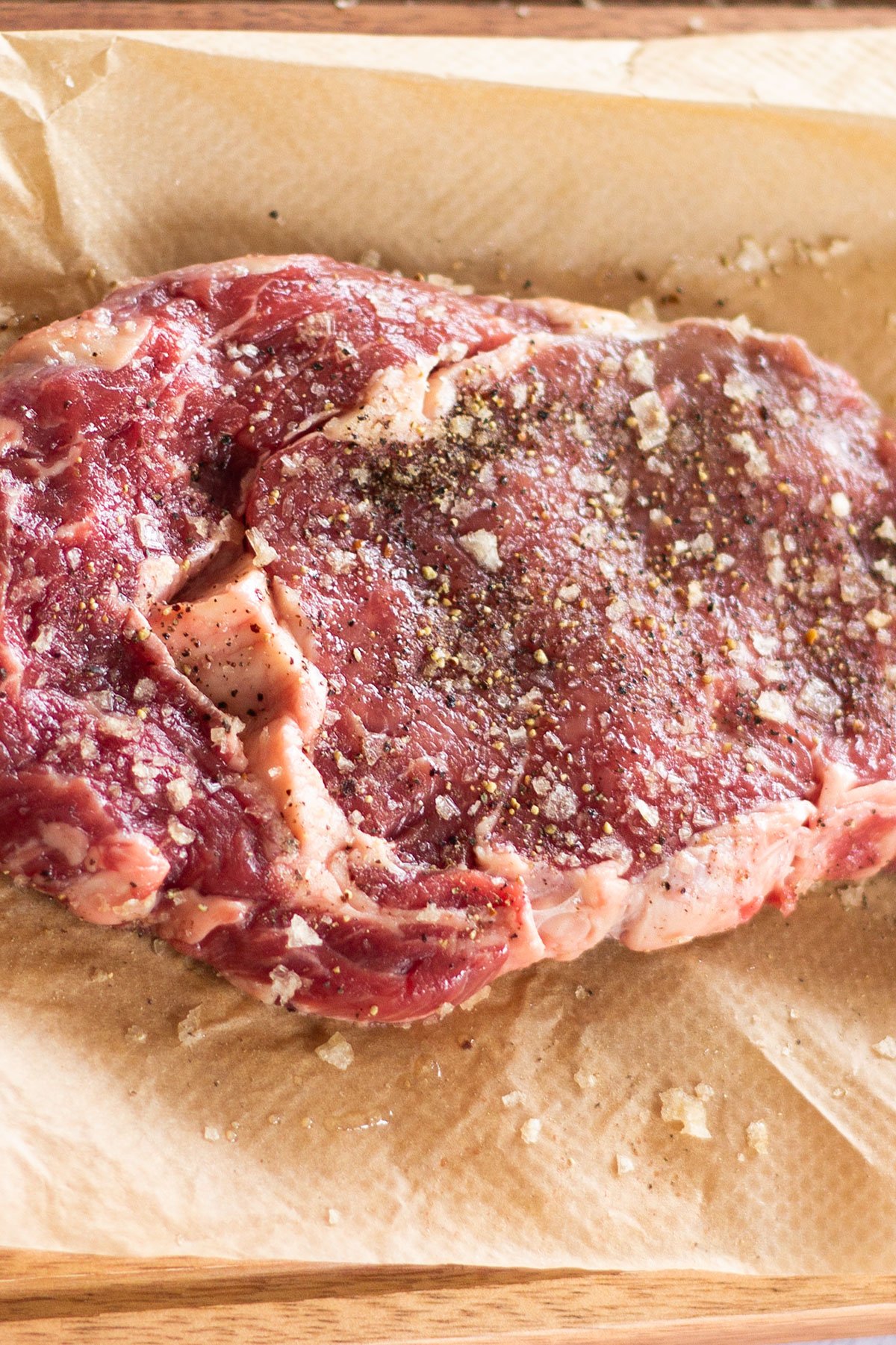
3. Sear
Cook the steaks for 2 to 4 minutes on each side. Leave your pan on the highest heat throughout.
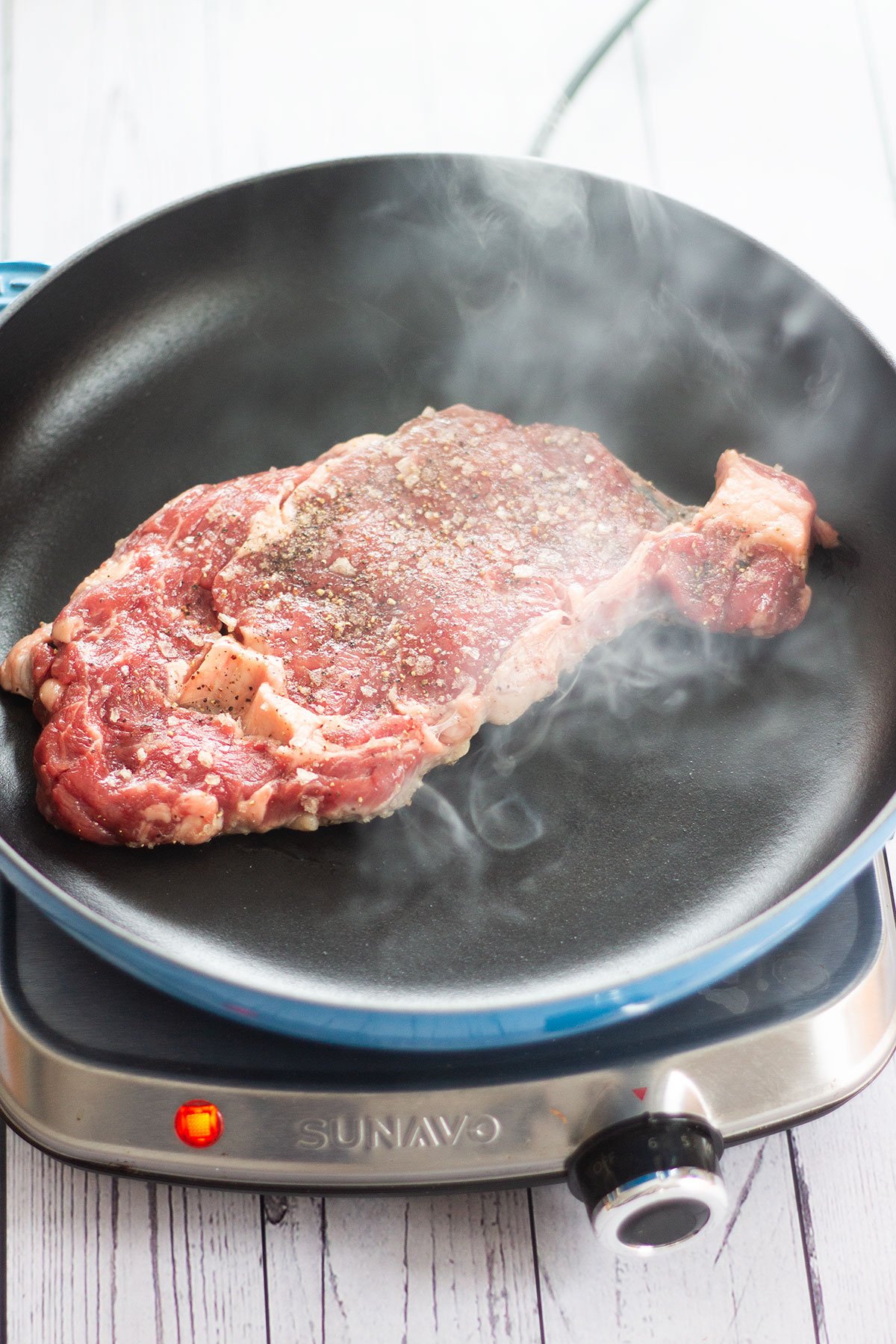
4. Add thyme and butter
Turn the heat down to medium and add the butter and thyme and cook for a further 1 to 2 minutes, turning the steak half way. Use a spoon to baste the steak with the herby butter while it cooks.
5. Rest the steak
Place the steaks on a wooden board and cover with foil and leave them for 10 minutes. Do not skip this step, the juices need a little time to redistribute themselves.
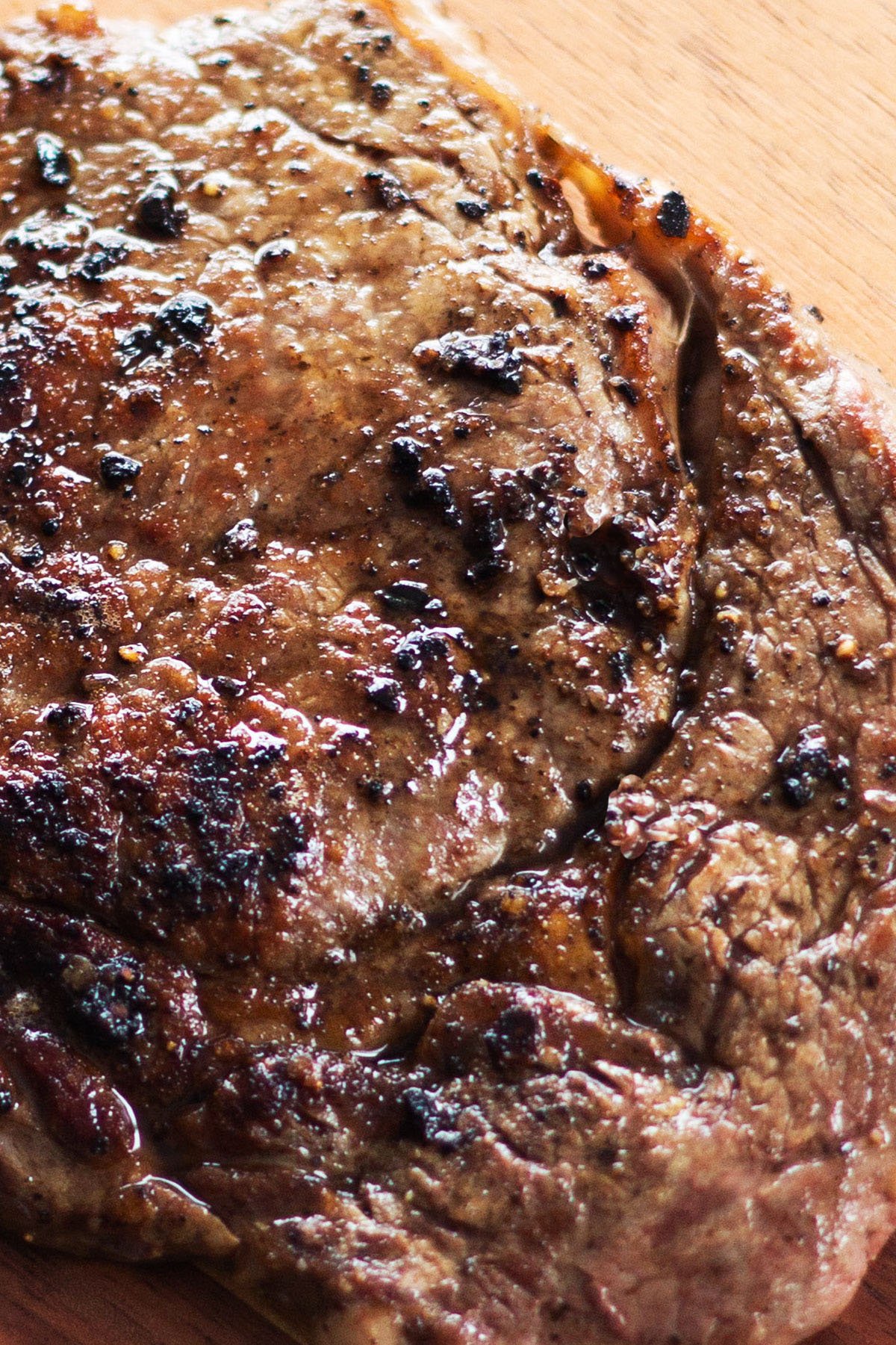
How to tell if a steak is cooked to your liking:
1. Use a meat thermometer:
- Rare - 52°C or 125°F (not suitable for ribeye)
- Medium rare - 57°C or 135°F
- Medium - 63°C or 145°F
- Medium well - 66°C or 150°F
- Well done - 71°C or 160°F
2. Use your finger
Touch the cooked steak with your finger. The amount of give and springiness shows you the steak's level of doneness. A rare steak will be soft and bouncy where as a well done steak will be firm. Medium will be somewhere in between.
Tools needed
- 2 boards - you will need one board for seasoning the raw steak and another for resting the cooked steak.
- Cast iron pan/skillet - ideal for cooking steak because of its ability to retain a high heat.
- Tongs - for turning the steak.
- Meat thermometer - to assess the steak's doneness once cooked. You can also use your finger to test doneness as mentioned above.
- Sharp knife - for slicing the steak after it has rested.
4 top tips for cooking the perfect ribeye steak:
- Bring the steak to room temperature before you cook it - take your steak out of the fridge an hour to an hour and a half before you plan to cook it. Remove the packaging and place it on a board. This ensures the steak cooks evenly.
- Season the steak generously before cooking - it may seem like you are adding a lot of salt at this point, but don't worry it will remain on the surface of the steak and enable an even crust to form.
- Make sure the pan is red hot before cooking the steak - place your pan on the highest heat and do not add the steak until the pan is smoking hot. You can test whether the pan is hot enough to start cooking by adding a small drop of water. If it forms beads the pan is ready.
- Let the steak rest - the juices that are released during the cooking process need a little time to re-absorb themselves into the steak. If you cut into the steak too soon, you will lose all these wonderful juices and be left with a dry steak. Let the steak rest for 10 minutes to ensure it is moist and juicy.
What to serve with ribeye steak:
Carbs:
There are lots of options here. Chips, potato wedges, baked potatoes and mash are all solid choices. We often serve ours with mash. I like to pour the excess fat from the steak pan into our mash to add extra richness.
Green veggies / salad:
Green vegetables like broccoli and spinach go well with ribeye steak. I recommend seasoning these with a little lemon juice because it helps to cut through the juicy fats in the steak. A green salad with a French or balsamic dressing also cuts through the fatty flavours of the ribeye.
Wine:
Ribeye steak pairs well with full bodied reds like Malbec and Rioja.
FAQs:
Ribeye steak is best cooked to medium-rare or medium. Cooking it to this level gives the wonderful fatty juices time to render while still ensuring the steak remains tender. Because ribeye is a fatty cut it is not suitable to eat rare. The fatty juices need more time to render than rare-steak cooking time allows. You can eat the steak medium well or well done if you prefer but you will miss out on the tender juiciness.
Ensure the pan is on its highest heat and is red hot before you add the steak. This will achieve a charred crust and ensure the centre stays moist and juicy with a few minutes of searing.
Marinades are a great way to flavour and tenderise tougher cuts of steak like flank or skirt, but are not needed for ribeye. The natural fattiness of ribeye will ensure it is tender and full of flavour.
More quick & easy dinner recipes:
- Middle Eastern Lamb Mince Flatbread
- Spicy Instant Pot Mongolian Beef
- Grilled Lemon & Turmeric Chicken Thighs
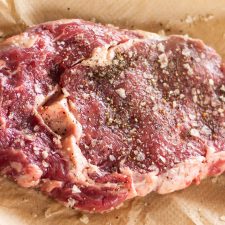
Cast Iron Skillet Ribeye Steak
Equipment
Ingredients
- 2 ribeye steaks (Note 1)
- 2 tsp neutral oil (Note 2)
- Smoked or sea salt flakes approx. 0.75 tbsp per steak
- Ground black pepper approx. just under ¼ tsp per steak
- 2 tbsp room temperature butter
- 4 sprigs of fresh thyme
Instructions
- Remove the steaks from the fridge 1 hour to 1.5 hours before cooking to allow them to reach room temperature.
- Set your frying pan to its highest heat.
- Rub each steak with oil and season generously with smoked salt and pepper on both sides. (Note 3)
- Cook for 2 to 4 minutes on each side depending on the thickness of each steak.
- Use your finger or a meat thermometer to check if the steak is cooked to your liking. (Note 4)
- Turn the heat down to medium, add the butter and the thyme to the pan and continue to cook for 1-2 minutes, turning halfway. Use a spoon to baste the steaks with the melted thyme butter.
- Cover the steak with foil and rest for 10 minutes. (Note 5)
Notes
- Steak: Approx. 250g (or 9oz) per person, but steak sizes vary so you might need to adjust the seasoning for a larger or smaller steak.
- Oil: Use a neutral oil with a high burn point like groundnut or vegetable oil. Do not use olive oil. It will burn with the high temperature required for cooking steak.
- Salt: Be generous here and don't worry too much about over-seasoning. It may seem like a lot of salt but it will stay on the outside of the steak and most of it will come off during the cooking process. The exact amount of seasoning you need will depend on the size of the steak. Scroll up to see a photo of how the steak should look when seasoned.
- Checking doneness: Scroll up for more details on how to do this
- Resting the steak: If blood comes out when you cut into the steak it is not fully rested

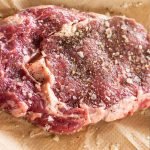
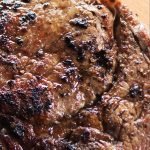
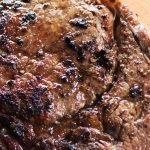
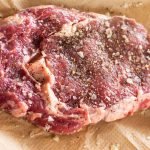
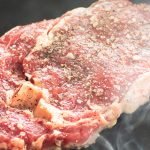
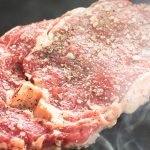
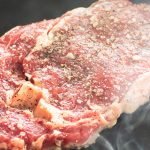
Leave a Reply